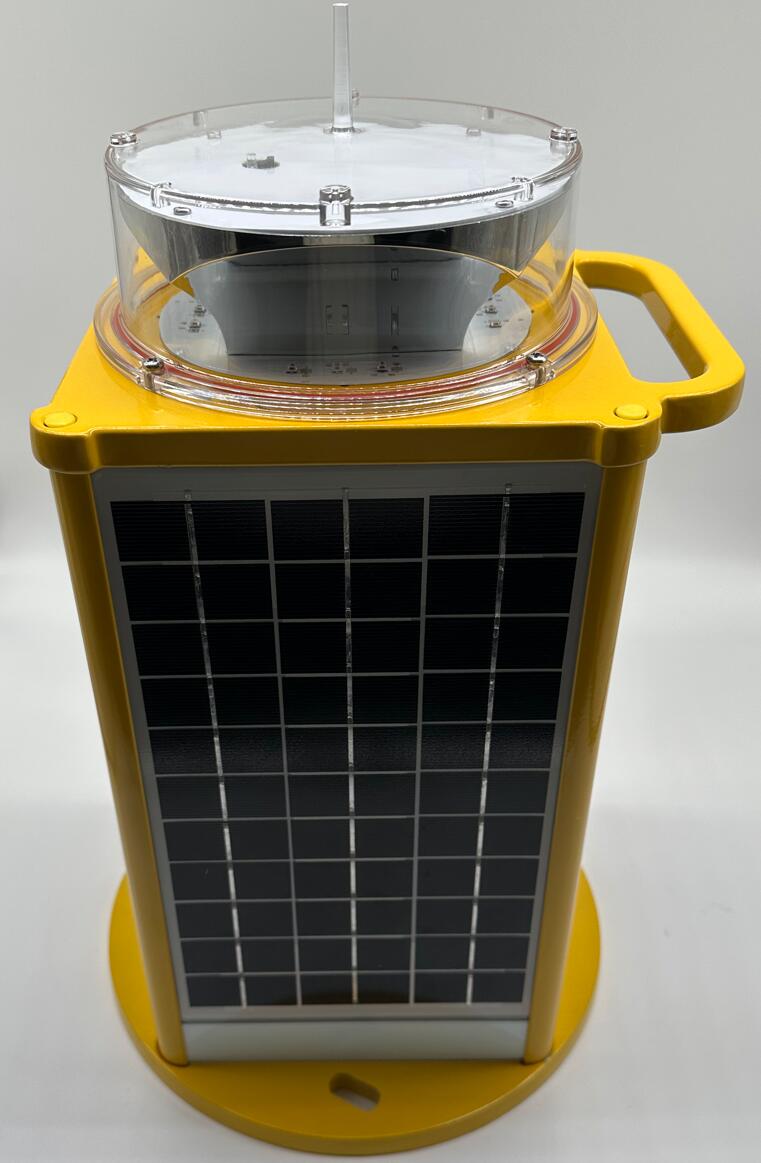In the complex and high - stakes realm of aviation, every component and system plays a vital role in ensuring safety. One such remarkable innovation is solar powered aircraft warning lights. These lights are not just a technological upgrade but a significant leap forward in enhancing the security of flights.
Solar powered aircraft warning lights are designed to meet the demanding requirements of the aviation environment. The solar panels integrated into these lights are highly specialized. They are made from advanced photovoltaic materials that can efficiently convert sunlight into electricity. These materials are carefully selected to endure the extreme conditions that aircraft experience during flight, including exposure to ultraviolet radiation, temperature variations ranging from frigid cold at high altitudes to heat during ground operations, and the mechanical stress caused by the movement of the aircraft.

The energy generated by the solar panels is stored in state - of - the - art batteries within the warning light units. These batteries are lightweight yet have a high energy - storage capacity. They are designed to provide a stable power supply to the lights even during extended periods of low sunlight, such as during long - haul flights that cross different time zones or when encountering adverse weather conditions with cloud cover. The charging and discharging mechanisms of these batteries are optimized to ensure a long lifespan, reducing the need for frequent replacements.
| solar powered aircraft warning lights | T672 |
The functionality of solar powered aircraft warning lights goes beyond just being a source of illumination. They are equipped with intelligent light - emitting diode (LED) technology. The LEDs are designed to emit a highly visible and intense light that can be easily detected from long distances. The color of the light is carefully chosen based on international aviation standards to ensure maximum visibility during both day and night operations. For example, red lights are commonly used on the left wingtip and green lights on the right wingtip, with a white light at the tail. This color - coded system allows pilots and air traffic controllers to quickly identify the position and orientation of an aircraft.
In addition to their basic function, these warning lights also have built - in sensors and communication modules. The sensors can detect environmental factors such as light intensity and weather conditions. Based on this information, the lights can automatically adjust their brightness. During clear days with ample sunlight, the lights may operate at a lower brightness level to conserve energy, while during foggy or low - visibility conditions, they increase their luminosity. The communication modules enable the lights to send status reports to the aircraft's central control system. This allows the flight crew to be immediately informed if there are any issues with the warning lights, such as a malfunction or a low battery condition.
The installation of solar powered aircraft warning lights offers several benefits to the aviation industry. From an economic perspective, they reduce the reliance on traditional power sources, resulting in lower fuel consumption and maintenance costs associated with power supply systems. Environmentally, they contribute to the reduction of carbon emissions as they do not require the burning of fossil fuels for operation. In terms of safety, they enhance the visibility of aircraft, reducing the risk of mid - air collisions, especially in busy airspace or during approach and landing procedures.
Looking ahead, the future of solar powered aircraft warning lights holds great promise. With continuous research and development, we can expect to see even more efficient solar panels, longer - lasting batteries, and more advanced control and communication systems. This will further improve the performance and reliability of these lights, making air travel even safer and more sustainable. In conclusion, solar - powered aircraft warning lights are a brilliant innovation that is illuminating the path to a safer and more environmentally friendly aviation future.